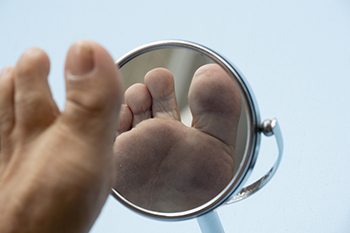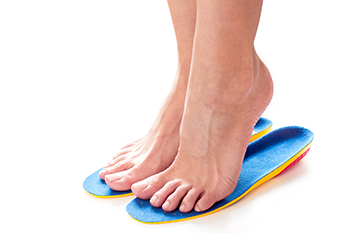 Recent research has indicated the most common place on the body that is affected by wearing high heels are the feet. Excess pressure is placed on the front of the foot when high heels are worn. When this type of shoe is frequently worn, serious foot conditions may develop. Some of these can include bunions, hammertoes, and Morton’s neuroma. Many people who enjoy wearing high heels understand the benefits of properly stretching the Achilles tendon at the end of the day. This can be done by standing on a step, and gently stretching the heel downward. Additionally, rotating the ankle in circles can help to strengthen the entire foot. If you have questions about wearing high heels, and how they can affect your feet, please speak with a podiatrist.
Recent research has indicated the most common place on the body that is affected by wearing high heels are the feet. Excess pressure is placed on the front of the foot when high heels are worn. When this type of shoe is frequently worn, serious foot conditions may develop. Some of these can include bunions, hammertoes, and Morton’s neuroma. Many people who enjoy wearing high heels understand the benefits of properly stretching the Achilles tendon at the end of the day. This can be done by standing on a step, and gently stretching the heel downward. Additionally, rotating the ankle in circles can help to strengthen the entire foot. If you have questions about wearing high heels, and how they can affect your feet, please speak with a podiatrist.
High heels have a history of causing foot and ankle problems. If you have any concerns about your feet or ankles, contact one of our podiatrists from Foot and Ankle Clinics, PA. Our doctors can provide the care you need to keep you pain-free and on your feet.
Effects of High Heels on the Feet
High heels are popular shoes among women because of their many styles and societal appeal. Despite this, high heels can still cause many health problems if worn too frequently.
Which Parts of My Body Will Be Affected by High Heels?
- Ankle Joints
- Achilles Tendon – May shorten and stiffen with prolonged wear
- Balls of the Feet
- Knees – Heels cause the knees to bend constantly, creating stress on them
- Back – They decrease the spine’s ability to absorb shock, which may lead to back pain. The vertebrae of the lower back may compress.
What Kinds of Foot Problems Can Develop from Wearing High Heels?
- Corns
- Calluses
- Hammertoe
- Bunions
- Morton’s Neuroma
- Plantar Fasciitis
How Can I Still Wear High Heels and Maintain Foot Health?
If you want to wear high heeled shoes, make sure that you are not wearing them every day, as this will help prevent long term physical problems. Try wearing thicker heels as opposed to stilettos to distribute weight more evenly across the feet. Always make sure you are wearing the proper shoes for the right occasion, such as sneakers for exercising. If you walk to work, try carrying your heels with you and changing into them once you arrive at work. Adding inserts to your heels can help cushion your feet and absorb shock. Full foot inserts or metatarsal pads are available.
If you have any questions please feel free to contact our offices located in Woodbury, West St. Paul, and Edina, MN . We offer the newest diagnostic and treatment technologies for all your foot and ankle needs.





